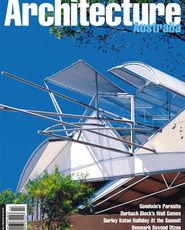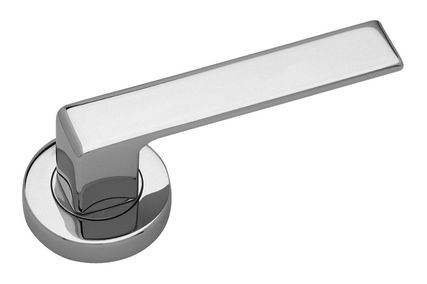|
| Project Description The pavilion was crafted for $158,000 by Nowra builder Brian Daley, who had not previously worked with an architect. It is framed in blackbutt, with flooring and decking of turpentine and wall cladding of Mini Orb corrugated steel. Hovering above is a wide skillion roof folded up sharply to the north. The sharper gradient is supported by V-trusses along the building’s north edge. Architect’s Note by Peter Stutchbury The building is without fuss and subservient to the bush room it occupies. One can choose to bathe, sleep or live enclosed or protected by roof alone; mood is governed by place.This shed reinforces our consistent position of occupation for this country. Our clients embraced their project, their design sense was clear and they are responsible for many of the building’s finishes. We all found the process a significant contribution toward our own perceptions. Comment by Nielsen Warren To attempt a ‘critique’ of this place seems incongruous, like writing a critique of Selby Alley Hut, off the track up Carey’s Peak, or the tiny shack at Suggan Buggan on the Barry Way. Photographs and drawings will provide ample material for the reader to understand and form an opinion of this little work of architecture. I much prefer to share a personal response; lyrical, perhaps, because this is a lyrical place. The building is remarkable and the architect certainly leads with his imagination. But the expression is not idiosyncratic, and I don’t sense that he is imposing himself on his client and the setting. Indeed, the whole seems to be a very natural exercise in obedience—to the site, to the client and, of course, to his own inner voice. Stutchbury’s mother taught him that knowledge may be acquired in the city, but one must go to the wilderness to find truth. What wilderness, I wonder, and what truth? Truth is such a subtle word. Is truth a function of awareness, consciousness, or is truth summed up in event? Truth for a boat builder is much the same as truth for an architect. That is why the best is both. The boat builder’s truth is in his sense of the totality of his task, which includes the truth of a wilderness of ocean and a storm that may test his vessel to destruction. Likewise, it is such truth that gives a building inevitability—the balance point of all considerations—that makes it just right. And that’s why I am so totally at ease as I sit here, with this little object lesson of truth in the wilderness. This house in the forest is already emotive, with associations that take me back to childhood and beyond. It stands beside a fairy ring in a grassy forest glade, and already it begs questions about how it got here, and why. How long ago, and by whom? A myth is in the making—much more fun than a set of facts. Perhaps it is life and love that are so much in evidence here. Life, in a chain that extends from the singing cicadas; the forest, which is a curious mix of old growth remnants and plantation pine; the green glade that infiltrates the trees and establishes the outer limits of the site; the site itself, so beautiful, firm and ordered in its definition; the house; the young student who held the architect’s pencil; the builder who tendered then fell in love with the project; the architect, the client with his dream—all linked in testing but loving relationship. I can see it. The siting of this event moves me first, then the building. It seems right to quote Vincent Scully: Because of the ordered variety, clarity and scale in the landscape, the human being is neither engulfed nor adrift in Greece. He can come close to the Earth to experience either its comfort or its threat—‘The Earth, The Temple and The Gods’, 1962, cit. C. Norberg-Schultz, Meaning in Western Architecture, Rizzoli, New York, 1980. Values do not depend on measure for their expression. As the Greeks came to terms with their wilderness, so we do with ours. Stutchbury is doing something important here. This is not the apologetic siting of a building pretending not to be there. In fact, a deliberate, romantic idealisation of landscape is at work. The land is worked with authority. The forest is ennobled, not diminished. Stutchbury is one person I know who is truly at home in Australia. The house—the architect calls it a shed—is all verandah, inside and out, under a featherweight roof. Living room and bedroom anchor inwardly to the fireplace, outwardly to the forest; interior defined by the lightest plywood plane against the roof. Even the tiny bathroom is verandah, in perfect privacy. It’s all so simple but beautifully resolved. Every detail is part of the whole, refined and crafted. And the roof? Just right, like any little creature you might find in the bush: at home in its surroundings; a flying foil to those steps which literally underline everything. So Mind enters the wilderness and establishes Truth. The building, like the Temple to Poseidon at Cape Sounion, is perfect in its place. Pinpoint of light. Now it is time to go. A beautiful verse by William Blake comes to mind: He who binds to himself a joy Nobody will ever ‘own’ this building. Not really—any more than its setting can be ‘owned’. Enjoyed? Yes. And treasured. But to own this building is to crush it, or to spike it with a pin, like a rare but dead butterfly. The building lives and it loves life, and while it lives it will smile at any storm, be wonderful in the light of lightning, calm and cool in the silence of a black, starry night. Great fun at Christmas. Even in old age, the friendly, tough little house will give shelter and shade to all who live in it; even to the wayward cicada who hums in out of nowhere, and maybe finds a Truth. Nielsen Warren is an architect in Sydney. Retreat, Kangaroo Valley, NSW |



















